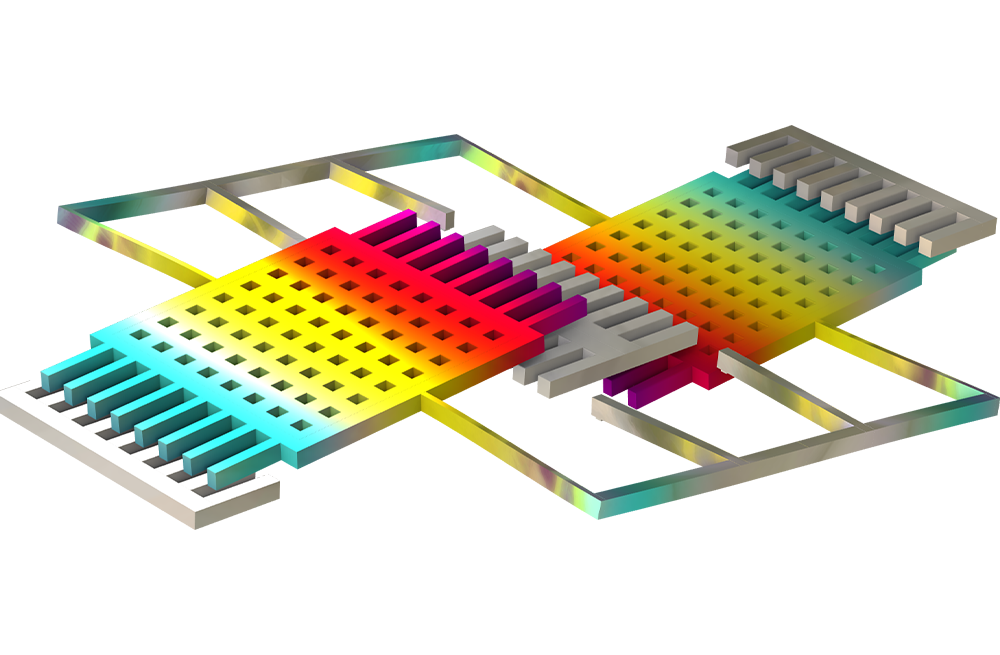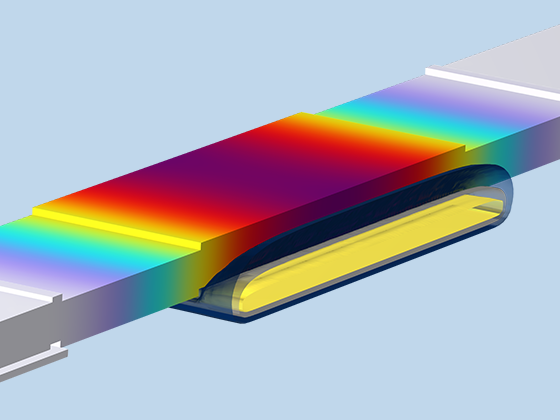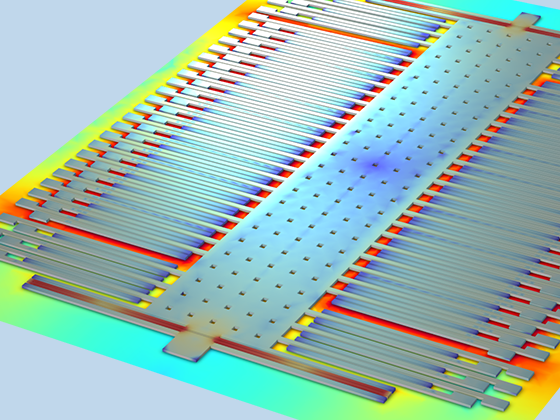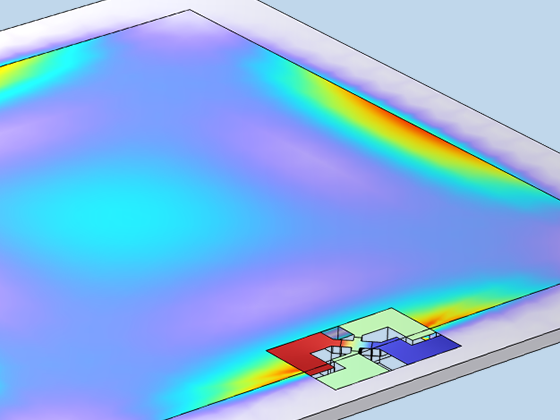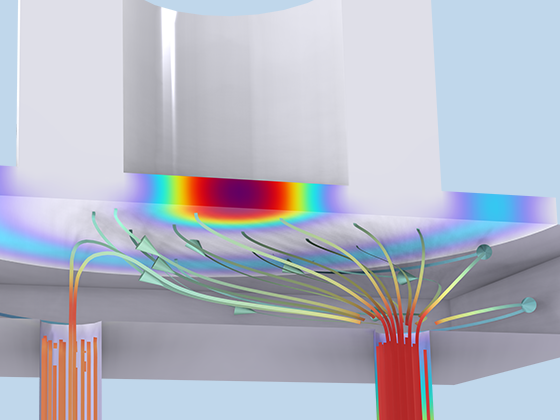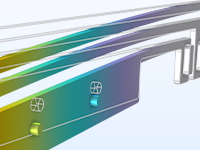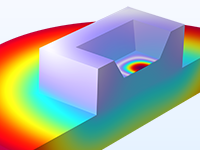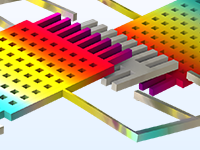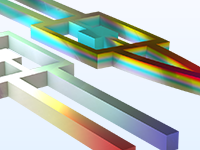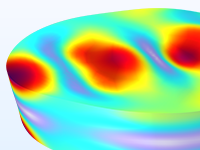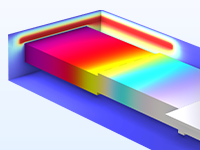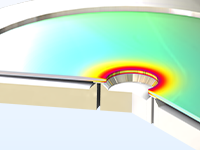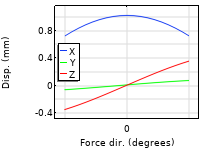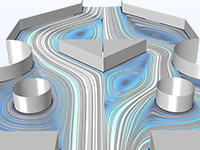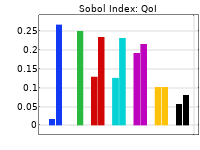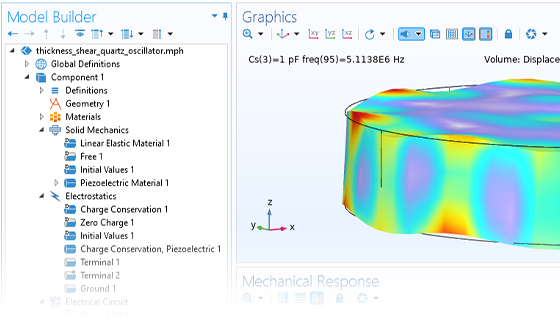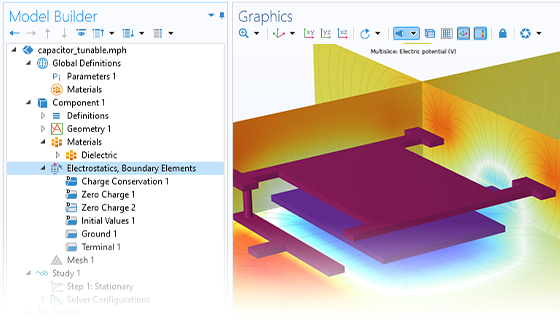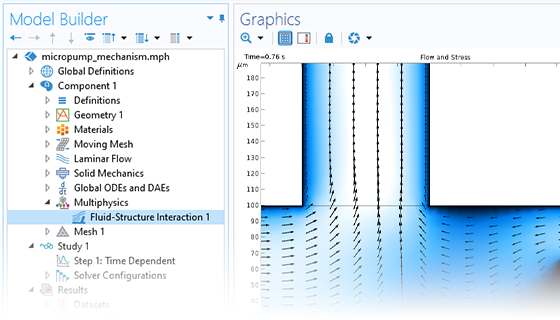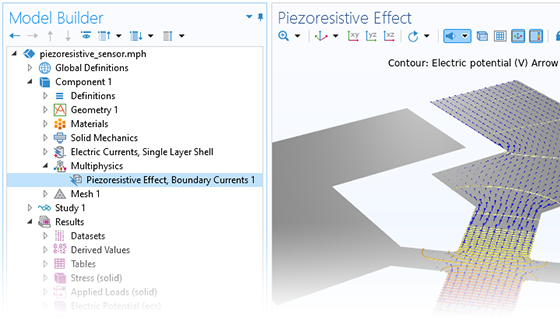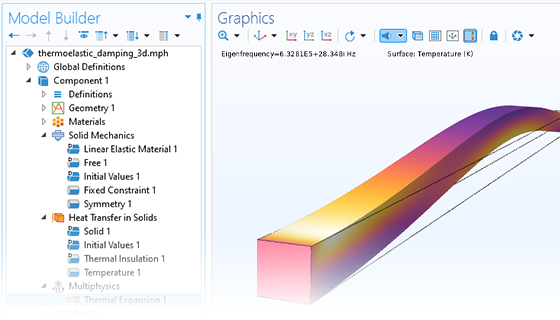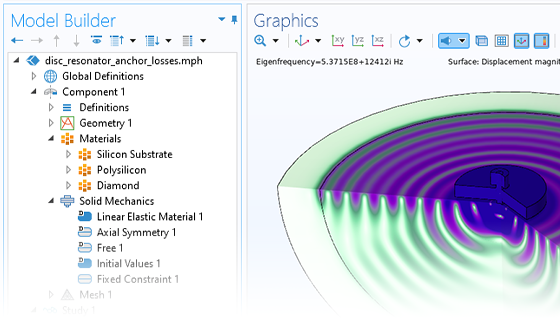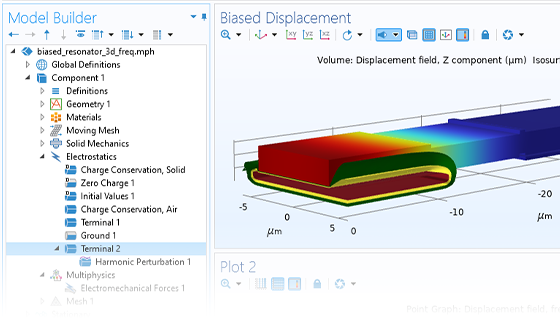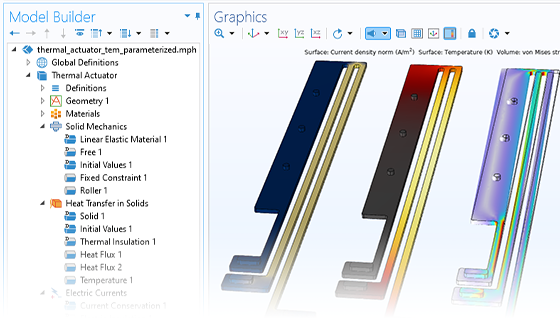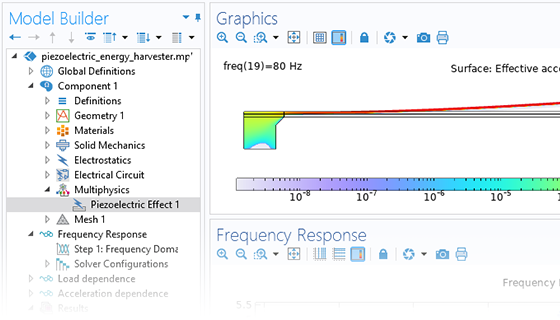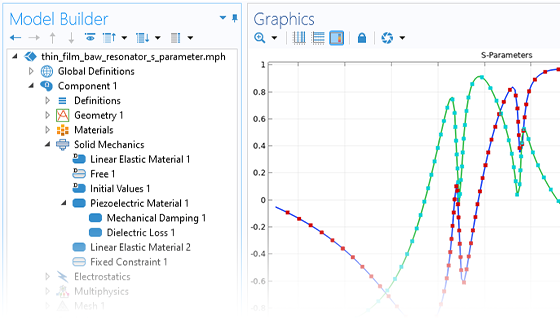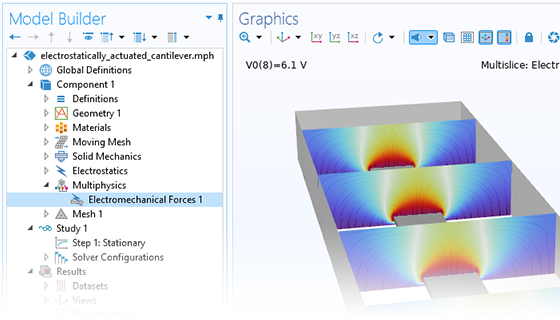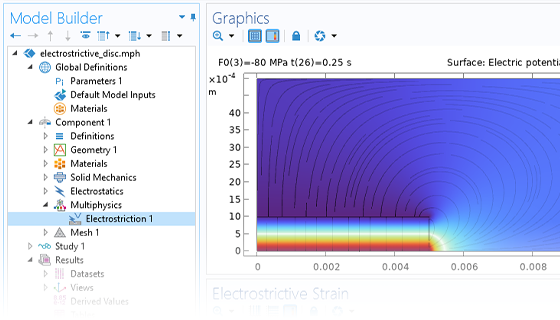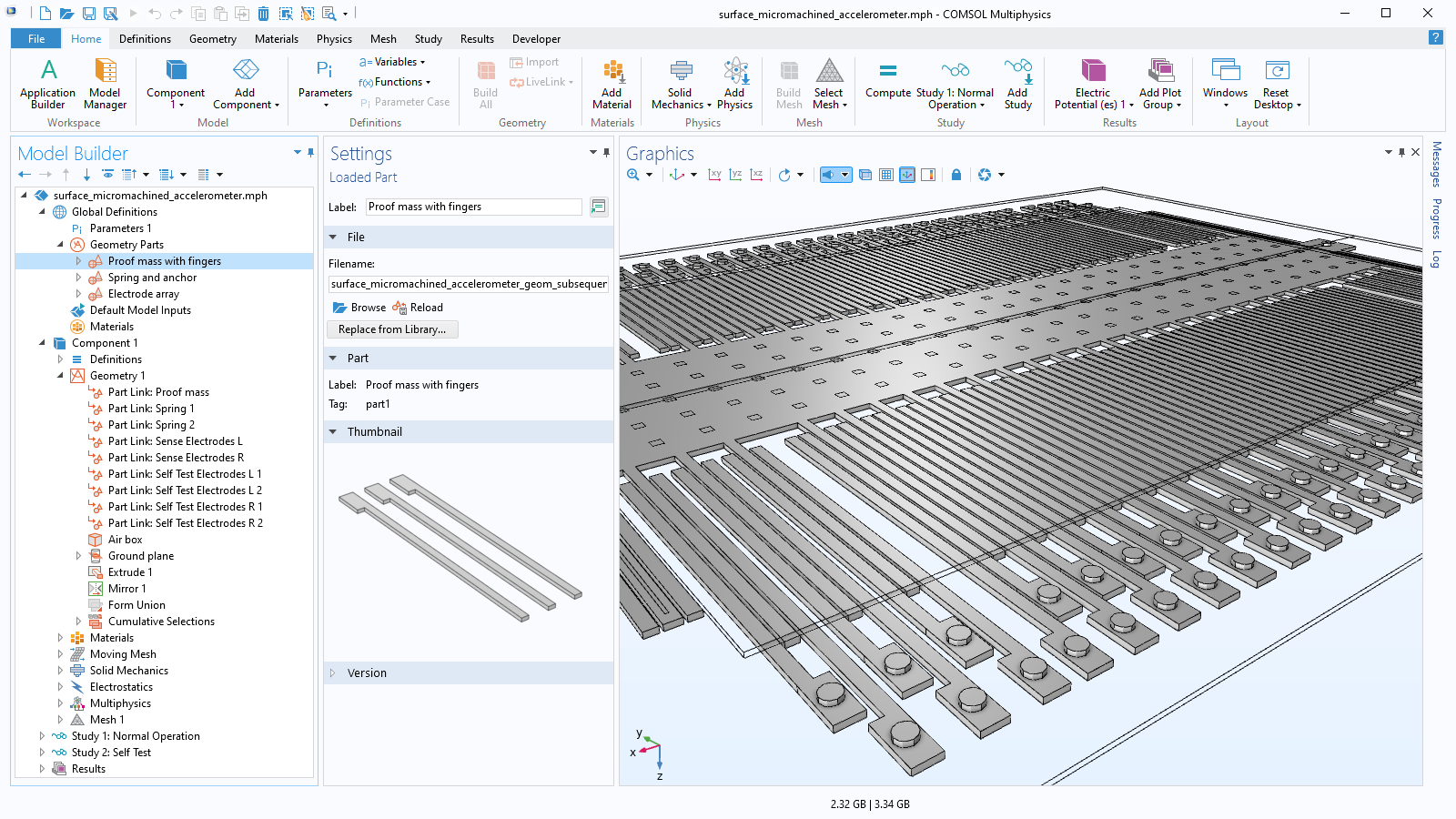Simulate MEMS Devices and a Variety of Multiphysics Interactions
The MEMS Module is used for simulating quartz oscillators as well as many other types of piezoelectric devices. Piezoelectric simulations can include prestress as well as nonlinear effects. With the MEMS Module, you can also model the effects of thermal expansion in actuators and sensors.
In addition to modeling common multiphysics phenomena, the MEMS Module is capable of modeling a number of intricate multiphysics interactions that are important for accurate simulation of MEMS devices. This includes hygroscopic swelling, thermoelastic and squeeze-film damping, bidirectional fluid–structure interaction (FSI), and piezoresistive, electrostrictive, and ferroelectroelastic effects (including hysteresis).
The MEMS Module can be used with other COMSOL Multiphysics® add-on modules as well. For instance, when it is combined with the AC/DC Module, you can analyze magnetostrictive devices. Working in combination with the Structural Mechanics Module enables shell modeling in MEMS devices, and adding the Microfluidics Module will provide you with additional tools for analyzing biomedical MEMS devices with an emphasis on fluid flow.

